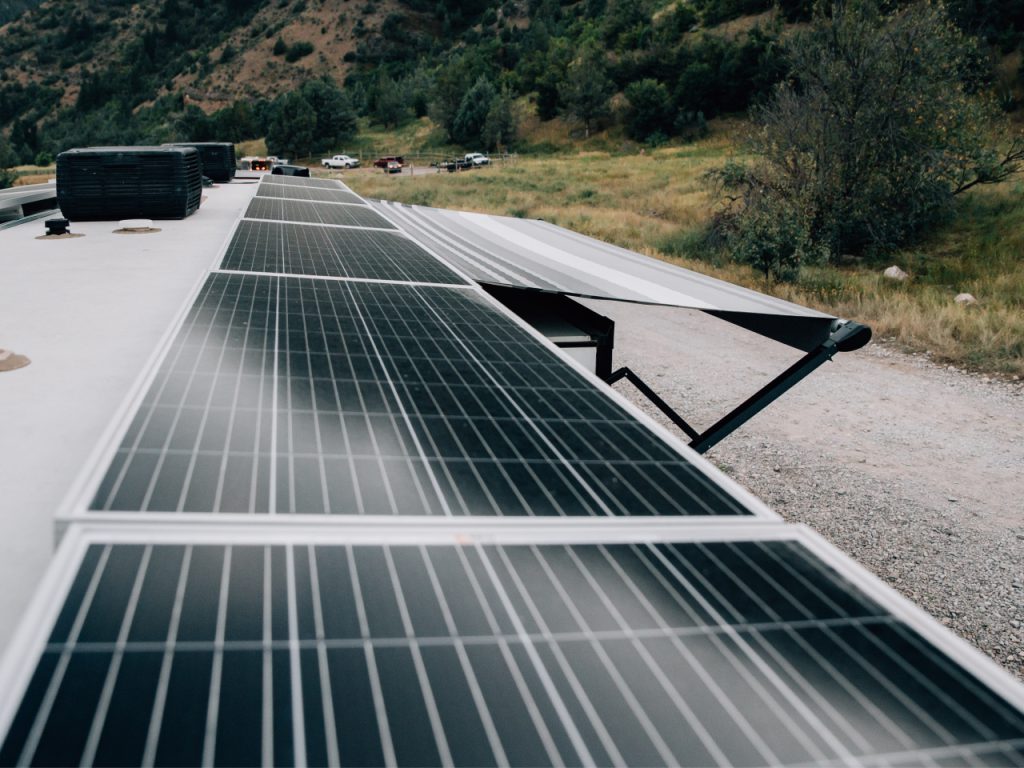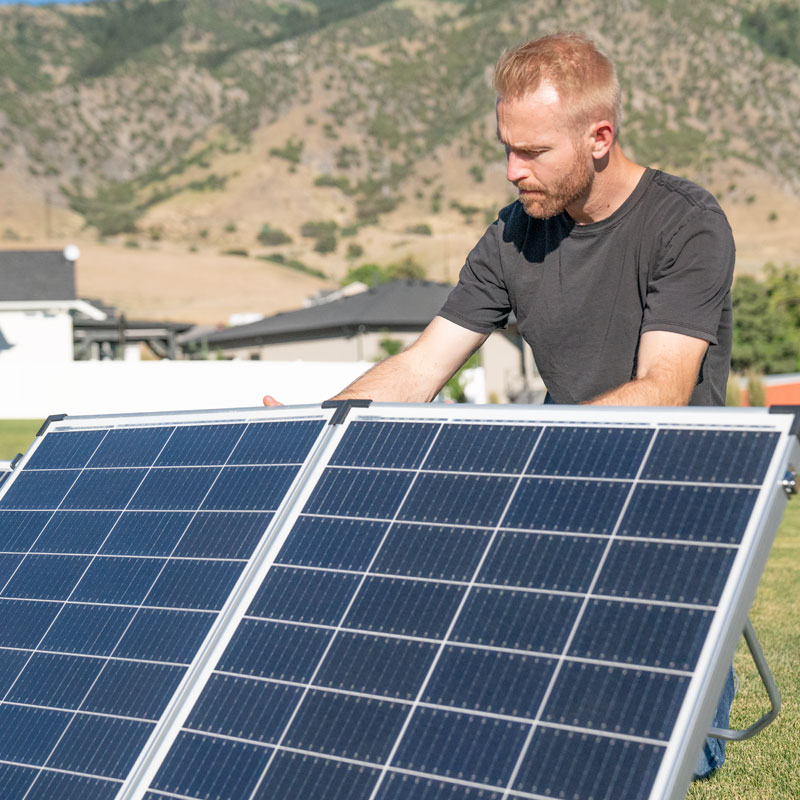When it comes to powering remote locations or being more energy efficient, solar power can be a great solution. One of the key considerations for those who rely on solar power is determining how many solar panels they need to generate enough electricity to meet their needs. In this article, we will discuss the factors to consider when determining the number of solar panels needed and how to calculate your specific requirements. This article is primarily geared towards individuals who are still connected to the grid but wish to incorporate solar power as a supplementary power source.

Diving into solar power can seem intimidating at first, with all the new terms and jargon. But, don’t worry, we’ve broken it down as simply as possible to help you understand how to determine how many solar panels you need for your specific needs. Let’s get started!
To figure out how many solar panels you need, you need to know four things:
When trying to estimate the amount of power you need your solar panels to produce, the first step is to determine your power usage. The power usage is typically listed in kilowatt-hours (kWh) on your monthly power bill. This number represents the amount of electricity you consume in a given period of time.
If you are unable to find your usage on your power bill, you can contact your power company and they will be able to provide you with that information. They will most likely ask for the time period you are looking for, the billing address and maybe an account number to confirm your identity.
Once you have your usage in kilowatt-hours, you’ll want to find your annual usage. You can do this by multiplying your monthly usage by 12. For example, if you use 500 kWh per month, your annual usage would be 6,000 kWh (500 x 12 = 6,000).
When planning your solar panel system, it’s important not only to consider your current energy needs, but also the potential changes that may occur in the future. It is important to keep in mind that as time goes by, your energy needs may evolve.
For example, you might plan to buy a larger home, which may require more energy to heat and cool. Or, you might be considering adding a hot tub or a pool, which can increase energy usage as well. If you plan on having more children, you’ll want to factor in the increased energy usage for additional appliances or electronics. Furthermore, if you plan on charging an electric vehicle, you’ll need to ensure that the solar panel system is capable of providing the necessary power to charge it.
All these potential changes can greatly affect your energy usage and increase it. It’s important to keep them in mind and plan your solar panel system accordingly, so you can ensure you have enough power to meet your future needs. One way to plan for future changes is by installing a solar panel system with a larger capacity than your current energy usage. This way, you’ll have room to grow and still have enough energy to power your home or cabin. Additionally, you can also consider adding battery storage to your solar panel system to help store the excess energy you produce, which you can use during times of high energy consumption.
For this exercise, let’s assume you have an annual usage of 10,000 kWh.
When planning your solar panel system, it’s important to consider your production goal, or the amount of power you want to generate using solar power. There is no single “correct” answer when it comes to how much power you should produce with solar, but some common recommendations include aiming to produce a certain percentage of your current power usage.
One of the most common recommendations is to aim for producing around 80% of your current power usage with solar power. Remember, this article is primarily geared towards individuals who are still connected to the grid but wish to incorporate solar power as a supplementary power source. This can help ensure that you’re meeting most of your energy needs while also being mindful of the costs and space needed for a solar panel system. A production goal of 80% can provide a good balance between cost-effectiveness and energy independence.
Another factor that is often considered when planning the production goal of a solar panel system is the energy consumption patterns of the homeowner. If your energy consumption is higher during the daytime, than having a solar system that can produce more of your energy consumption during the daylight hours can help you save more in the long run.
For this exercise, let’s assume you have a production goal of 80%.
When determining how many solar panels you need, it’s important to consider the solar panels and their wattage. Panel wattage, also known as a solar panel’s power rating, is a measure of a solar panel’s electricity output under optimal conditions. It is measured in watts (W).
When choosing solar panels, you’ll want to consider the wattage of the panels you’re considering. The wattage of a solar panel indicates the amount of electricity it can produce under ideal conditions.
In this example, we are assuming the wattage of the solar panel is 200W, which is the wattage of our Point Zero Energy 200W Rigid Solar Panel. It’s important to note that solar panels come in different sizes and wattage, and choosing the right one for you will depend on your specific needs and the space you have available for installation.
For example, if you’re planning to install the solar panel system on a RV, boat or a small cabin, you may want to consider a smaller, lower wattage panel. On the other hand, if you’re planning to install the solar panel system on a larger home or a commercial building, you may want to consider a higher wattage panel to meet your energy needs.
For this exercise, let’s assume the solar panel wattage of 200W.

A solar panel system’s production ratio is a measure of how effectively a solar panel system is converting sunlight into electricity. It is calculated by dividing the system’s estimated energy output over time (in kilowatt-hours or kWh) by its actual system size (in watts or W). A production ratio of 1:1 would indicate that the solar panel system is producing the same amount of energy as its system size. However, this ratio is almost never 1:1 because it is affected by factors such as the amount of sunlight the system receives, which varies based on the location, weather, shading and the orientation of the panels.
For example, a solar panel system that has a capacity of 15kW and produces 15kWh of electricity in a year would have a production ratio of 1.3 (20/15= 1.3). This production ratio is a typical outcome for a real-world solar panel system. In general, production ratios in the US are usually between 1.3 and 1.6, therefore these two numbers are commonly used as a high and low estimate for production ratio calculation. A higher production ratio indicates a more efficient solar panel system, which is producing more energy relative to its size.
For this exercise, let’s assume a production ratio of 1.3.
Now that we have discussed all the necessary numbers, let’s put that information into action and determine the number of solar panels needed in this scenario.
Number of solar panels = (annual power usage x production goal) / product ratio / panel wattage
Number of solar panels = (10,000 * 80%) / 1.3 / 200 = 30.77 solar panels.
Voilà! We just calculated how many solar panels you need.
Calculating the number of solar panels needed for a solar panel system can seem intimidating at first, with all the new terms, jargon and complex equations. But as we have shown, by understanding the basic factors that go into determining how many solar panels you need, it becomes a manageable task. By considering your power usage, production goal, solar panel wattage and production ratio, you can determine the number of solar panels needed to meet your energy needs. It’s important to remember that these calculations are just estimates and that the actual number of solar panels needed can vary based on factors such as location, shading, and climate. With this knowledge, you can confidently make an informed decision when it comes to setting up your solar panel system and be on your way to a greener, more sustainable future.
If you need more help or want to talk to a solar expert, reach out to our team here at Point Zero Energy.

